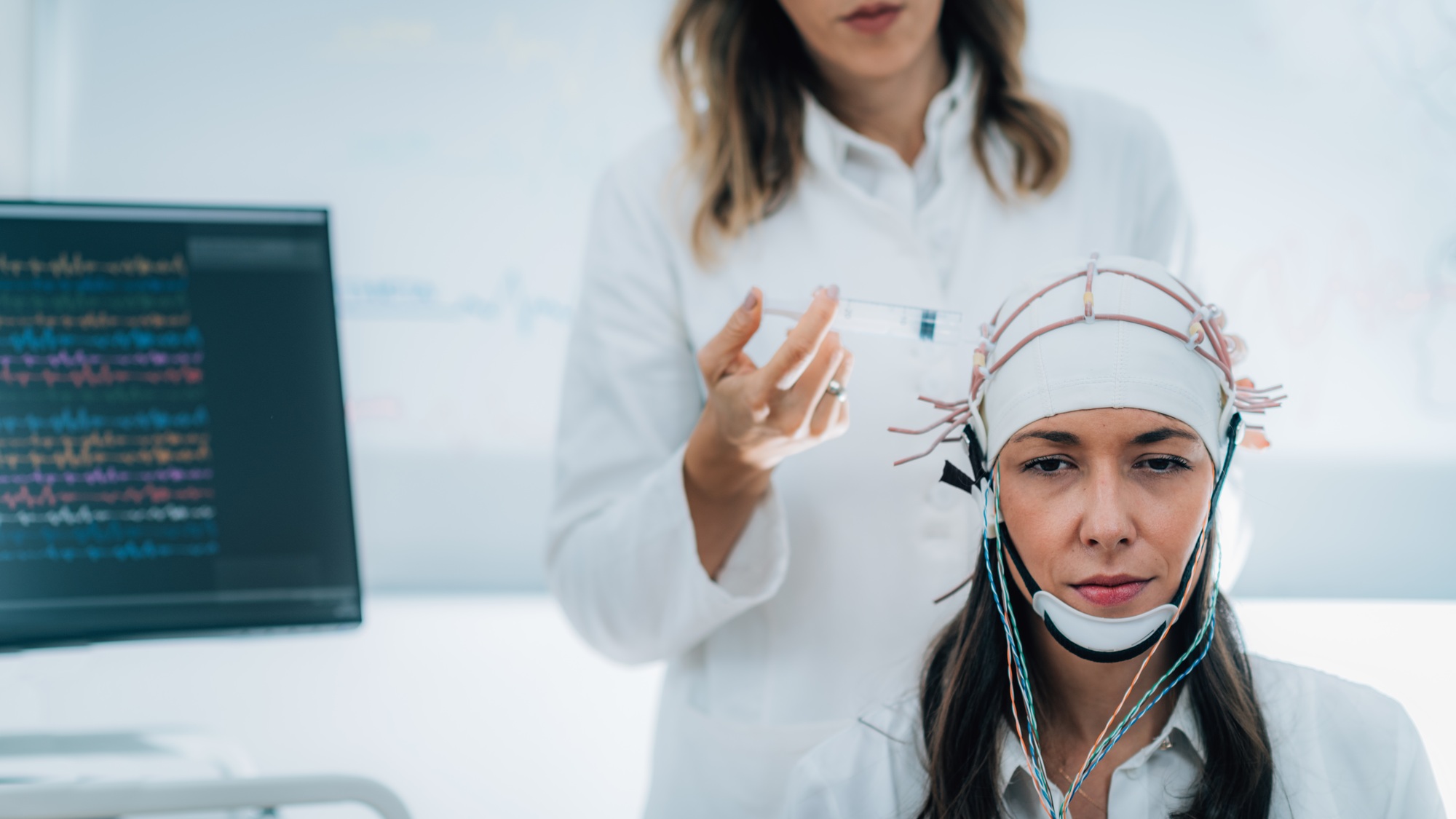A groundbreaking fusion of artificial intelligence and neuroscience is unlocking the secrets of human language processing like never before. Researchers are now using advanced AI algorithms to decode the complex patterns of brain activity associated with language comprehension and production. This innovative approach not only deepens our understanding of how the brain processes words and sentences but also opens new avenues for treating language disorders and enhancing brain–computer interfaces.

A New Era in Neuroscience Research
For decades, scientists have sought to unravel the mysteries behind how our brains manage language—a process that involves intricate interactions among various brain regions. Traditional methods like functional magnetic resonance imaging (fMRI) and electroencephalography (EEG) have provided valuable insights into localized brain activity. However, these tools alone struggled to piece together the dynamic interplay of neural networks during language tasks.
Enter the new AI algorithm, a technological marvel that leverages deep learning to analyze vast datasets of neural imaging. This algorithm identifies subtle patterns in brain activity that correspond to different aspects of language, such as syntax, semantics, and phonetics. By processing complex data at unprecedented speeds, the AI is not only mapping out where language is processed in the brain but also how these processes evolve over time.
How the AI Algorithm Works
Data-Driven Insights and Deep Learning
The core of this breakthrough is an AI model trained on thousands of brain scans collected during language tasks. Using advanced deep learning techniques, the algorithm learns to recognize specific neural signatures linked to various language functions. Here’s how it works:
- Data Collection: Researchers gather extensive datasets using high-resolution fMRI and EEG during tasks such as reading, listening, and speaking. These datasets capture both spatial and temporal aspects of brain activity.
- Pattern Recognition: The AI model applies convolutional neural networks (CNNs) and recurrent neural networks (RNNs) to sift through the data, identifying recurring patterns that correlate with linguistic elements.
- Dynamic Mapping: Unlike static imaging methods, the algorithm creates dynamic maps that show how different brain regions interact in real time. This mapping reveals the flow of information from auditory and visual processing areas to higher-level language centers like Broca’s and Wernicke’s areas.
- Predictive Modeling: With continuous learning, the AI can predict how the brain might respond to new language stimuli, potentially forecasting the onset of language disorders before clinical symptoms appear.
Beyond Conventional Analysis
Traditional analysis methods often averaged brain responses, potentially overlooking the nuance and variability inherent in human language processing. In contrast, this AI-driven approach respects individual differences, offering personalized insights into neural language networks. Such precision is essential for developing targeted interventions and therapies for those with language impairments.
Unpacking the Brain’s Language Network
The Complex Orchestra of Language Processing
Human language is not confined to one area of the brain. It involves a coordinated effort among multiple regions:
- Primary Auditory and Visual Cortices: These areas process the initial input of spoken or written language.
- Broca’s Area: Involved in speech production and syntactic processing.
- Wernicke’s Area: Key to understanding and generating meaningful language.
- Supplementary Motor Areas and Beyond: Support the physical production of speech and the integration of cognitive functions.
The AI algorithm shines by elucidating how these regions communicate. It reveals that language processing is a highly distributed function where timing and connectivity are as crucial as the individual roles of each brain area.
Beyond the Lab: Applications and Future Directions
Clinical Applications and Personalized Medicine
One of the most exciting implications of this research is its potential in clinical settings. Understanding the precise neural underpinnings of language could lead to:
- Early Diagnosis: By identifying atypical neural patterns, clinicians might detect language disorders such as dyslexia, aphasia, or autism-related language delays much earlier.
- Tailored Therapies: Therapies can be customized based on an individual’s unique neural profile, potentially improving outcomes for patients with speech and language impairments.
- Rehabilitation Strategies: For patients recovering from strokes or brain injuries, AI-driven insights can guide more effective rehabilitation strategies tailored to restore language functions.
Enhancing Brain–Computer Interfaces (BCIs)
The integration of AI and neuroscience is also paving the way for more sophisticated brain–computer interfaces. These devices could eventually translate neural signals directly into text or speech, offering a revolutionary communication tool for individuals with severe motor impairments or speech disabilities.
Educational Innovations
In the realm of education, understanding how the brain processes language can lead to personalized learning programs. By tailoring instruction to an individual’s neural strengths and weaknesses, educators can optimize language acquisition, making learning more efficient and effective.
Challenges and Ethical Considerations
Technical and Practical Limitations
While the potential is vast, several challenges remain:
- Data Complexity: Brain imaging produces enormous amounts of data, and processing it accurately requires significant computational power and advanced algorithms.
- Variability Among Individuals: Differences in brain anatomy and function mean that models must account for a wide range of variability to be broadly applicable.
- Interpretability: Deep learning models can sometimes operate as “black boxes,” making it difficult to fully understand the decision-making process behind their predictions.
Ethical Implications
The use of AI in neuroscience raises important ethical questions:
- Privacy: Brain data is deeply personal. Ensuring the privacy and security of such sensitive information is paramount.
- Consent and Bias: Researchers must ensure that data is collected ethically, with informed consent, and that AI models do not inadvertently reinforce biases present in the training data.
- Future Applications: As these technologies develop, clear guidelines and regulatory frameworks will be needed to prevent misuse and protect individuals’ rights.

Frequently Asked Questions
Q: What is the purpose of using AI to study the neuroscience of human language?
A: The AI algorithm is designed to analyze complex brain imaging data to identify patterns associated with language processing. This helps researchers understand how different brain regions interact during language tasks and opens up possibilities for early diagnosis and personalized treatment of language disorders.
Q: How can this research benefit people with language disorders or impairments?
A: By mapping the neural pathways involved in language, the technology can help detect abnormalities early, tailor rehabilitation programs, and even enhance brain–computer interfaces. This could lead to more effective treatments for conditions like dyslexia, aphasia, and other language-related impairments.
Q: What ethical concerns are associated with using AI in neuroscience research?
A: Key ethical concerns include ensuring the privacy and security of brain data, obtaining informed consent, avoiding bias in AI models, and establishing clear regulatory frameworks to guide the responsible use of such sensitive technologies.
The integration of AI and neuroscience is ushering in a new era of understanding human language. By revealing the dynamic interplay of brain regions involved in language processing, this technology not only deepens scientific knowledge but also holds promise for groundbreaking applications in healthcare, education, and assistive technologies. As researchers continue to refine these models, the future of personalized medicine and advanced brain–computer interfaces looks brighter than ever.
Sources Live Science


